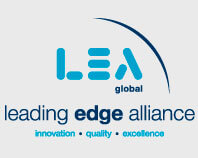Historically, research costs have been treated very beneficially by US taxpayers. First, eligible research costs are immediately deductible. Second, if those costs meet certain other criteria, they may qualify for federal and state research credits. Some of these credits are even refundable against employee withholding taxes.
For tax years beginning in 2022, research costs must be capitalized and amortized over either a five- or 15-year life depending upon whether the costs are sourced in the US or outside the US. Furthermore, if any property with respect to which these costs relate is disposed, retired or abandoned during the period of amortization, no deduction will be allowed; rather, the amortization will continue until fully amortized. This provision was installed as a revenue raiser in the Tax Cuts and Jobs Act (TCJA) of 2017 and it is expected to raise substantial tax revenues.
Many taxpayers have never evaluated whether they had research costs or not. If their research costs were not eligible for the credit, it was largely irrelevant. Beginning in 2022, unless legislative action is taken to change the provision, every taxpayer will need to ascertain whether any of their “normal” business expenses meet the definition of research costs. If so, they will need to quantify those costs and amortize them. Thus, beginning in 2022, research costs become bittersweet; bitter, in that they must be capitalized and amortized, sweet in that they may be credit eligible.
Research Costs
What are research costs? Section 174 of the Internal Revenue Code defines research costs to include all such costs incident to the development or improvement of a product. The term includes the costs of obtaining a patent, such as attorneys’ fees expended in making and perfecting a patent application. Expenditures represent research and development costs in the experimental or laboratory sense if they are for activities intended to discover information that would eliminate uncertainty concerning the development or improvement of a product. Uncertainty exists if the information available to the taxpayer does not establish the capability or method for developing or improving the product or the appropriate design of the product. Specifically, included as research costs are:
- Testing products (not including routine quality control)
- Developing and designing products/systems
- Improving products/systems
- Developing prototypes
- Validation testing
Taxpayers must identify not only direct research costs, but also indirect costs. Some companies currently pay intercompany charges that may include a reimbursement for research conducted by an affiliate. Some diligence will need to take place to see if any of these costs must be capitalized.
These changes brought about by the TCJA should be treated as a change in accounting method initiated by the taxpayer with IRS consent. The change will be applied on a cut-off basis such that there will be no IRC section 481 adjustments.
The changes described above will be most acute for research intensive companies, but the reach is far greater. Taxpayers should begin by estimating the amount of research currently being conducted and determining how capitalization will affect their tax posture.
What’s Next
On September 13, 2021, the Ways and Means Committee released a summary of Democratic proposals that defer implementation of these capitalization requirements until years beginning after December 31, 2025. It remains to be seen if this provision will become law, but Bennett Thrasher will continue to monitor the progress of these proposals as the legislative process plays out.
Contact Us
To learn more how to properly calculate the costs of research costs, contact Betsi Barrett by calling 770.396.2200.




